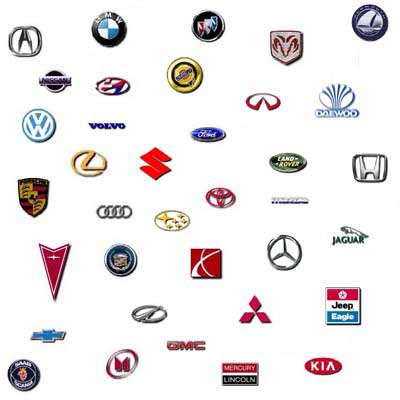In Reverse - Auto Manufacturer News for 2001
What's New for 2001

[Acura] [Audi] [BMW] [Buick] [Cadillac] [Chevrolet Cars] [Chevrolet Trucks] [Chrysler] [Dodge Cars] [Dodge Trucks] [Ford Cars] [Ford Trucks] [GMC] [Honda] [Hummer] [Hyundai] [Infiniti] [Isuzu] [Jaguar] [Jeep] [Kia] [Land Rover] [Lexus] [Lincoln] [Mazda] [Mercedes-Benz] [Mercury] [Mitsubishi] [Nissan] [Oldsmobile] [Plymouth] [Pontiac] [Porsche] [Saab] [Saturn] [Subaru] [Suzuki] [Toyota] [Ultima] [Volkswagen] [Volvo]
It's now the Twenty-First Century by any means of reckoning. And, with a few exceptions, the cars we drive wouldn't be much of a surprise visually to someone from a half a century ago.
But, many of the materials, construction, and electronics of today's cars and trucks would be alien technology to someone of the past. There is more computer power in a contemporary automobile than was found in an Apollo space capsule thirty years ago. And that's increasing. "Telematics" is the buzzword for the day, describing cell phone-based systems that offer automatic help in the case of an accident, and the ability to direct you to the nearest restaurant or unlock your car for you should you have left the keys inside. Nearly all luxury cars have such a system available.
Global Positioning System (GPS) satellite technology is used by telematics systems and the ever more common navigation systems. Video entertainment systems for rear-seat passengers are available through some manufacturers and the aftermarket. Soon, Internet connectivity will come, with a computer voice reading your email to you while you're stuck in traffic on the way to work.
Lightweight metals like aluminum, and composite materials including fiberglass, plastics, and even carbon fiber, are increasingly used for chassis and body parts because of their low weight and high strength. Lighter vehicles are more fuel-efficient, and the synthetic materials used for interiors are far safer than metal in an accident.
An increasing number of vehicles blur the traditional lines between cars and trucks. Call them "crossover vehicles." Some look like trucks, sport-utility vehicles in particular, but are built like cars. Manufacturers are inventing new categories to describe them, such as "Sport Activity Vehicle" or "Sport Recreation Vehicle." From a more traditionally car perspective come station wagons with added ground clearance and all-wheel drive for all-weather, all-road abilities.
The gasoline-fueled internal combustion engine is still the overwhelming choice for power. But hybrid systems, combining an internal combustion engine, electric motor, batteries, and sophisticated electronic controls, are becoming increasingly available. They offer high fuel economy, low emissions levels, and a long range. Fuel cell-powered electric vehicles are still in prototype stage, but may be coming to market in the near future. They should have much greater ranges than battery-electric vehicles.
Style, safety, and environmental friendliness still count, and are in no way mutually exclusive. The numbers and types of cars, trucks, and in-betweens has never been greater. The vehicles offered have never been better, and there is variety that should please every interest, need, and budget.


